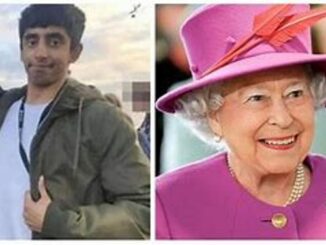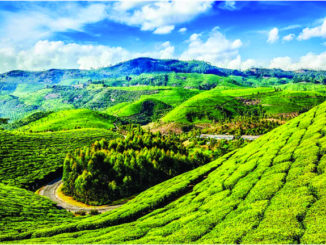
New Delhi (TIP)- The Bharatiya Janta Party has returned to power in Uttar Pradesh for a second straight term in a historic election victory. Yogi Adityanath, too, has returned to office for a second consecutive term – a first in 37 years. The BJP, which traditionally had Brahmins and Thakurs as its core vote base, has gone to great lengths to woo the Dalits, in addition to the Bhumihars and Jats in the crucial state elections, seen by many as a semi-final before the high-stakes 2024 general election.
As Yogi Adityanath took the oath of office on March 25, 52 leaders were sworn in as ministers at a ceremony that was reportedly attended by 85,000 people, including senior politicians. Of them, 18 have been given Cabinet berths and 14 are Ministers of State with independent charges and 20 are junior ministers. The party has carefully distributed the positions among leaders who represent the backward classes, who are Muslims and who are from the Sikh community.
To break down Yogi Adityanath’s Cabinet on the basis of castes, 21, including the chief minister, come from upper castes, 20 are from the Other Backward Classes (OBCs), and nine are Dalits, while there is one minister each from the Muslim, Sikh and Punjabi communities. In addition, Yadavs have also been given prominence in representation.
THE UPPER CASTES
Yogi Adityanath’s Cabinet 2.0 has 21 ministers from the upper castes; seven are Brahmans, three are Vaishyas and eight, including the chief minister, represent the Thakurs. The Cabinet also has one Kayastha and two Bhumihar ministers. Of the seven Brahmin ministers, three are in the Cabinet, one has independent charge and three are junior ministers. While Brajesh Pathak is one of the two deputy chief ministers of the state, Yogendra Upadhyay and Jitin Prasada, who switched over from the Congress, have been given Cabinet berths. Pratibha Shukla, Rajni Tiwari and Satish Sharma took oaths as junior ministers.
THE THAKURS
Apart from Chief Minister Yogi Adityanath, Jaiveer Singh has been made a Cabinet minister. JPS Rathore, Dayashankar Singh, and Dinesh Pratap Singh have been made Ministers of State with independent charges. Brijesh Singh, Mayankeshwaran Singh and Somendra Tomar are junior ministers.
THE VAISHYAS-KAYASTHAS-BHUMIHARS
Three ministers from the Vaishya caste have been made ministers in Yogi Adityanath’s second term in office. Of them, Nandgopal Nandi is a Cabinet Minister and Nitin Agarwal and Kapil Dev Agarwal are junior ministers. Suryapratap Shahi and Arvind Kumar Sharma have joined the Cabinet from the Bhumihar community. Arun Kumar Saxena from the Kayastha community has been given independent charge.
THE OTHER BACKWARD CLASSES
Of the 20 ministers from the Other Backward Classes, BJP’s allies Apna Dal and the Nishaad Party have been given one Cabinet berth each. BJP’s prominent OBC face Keshav Prasad Maurya has been reappointed as a deputy chief minister despite his poll defeat. Swatantra Dev Singh and Rakesh Sachan, both Kurmi leaders, have been given a Cabinet post along with Ashish Patel from Apna Dal, the BJP’s ally. In all, eight leaders from the OBC community have been given Cabinet seats. Jat leaders Lakshmi Narayan Chowdhury and Bhupendra Singh Chowdhury are Cabinet ministers, too. Anil Rajbhar from the Rajbhar community, Sanjay Nishad from the Nishad community and Dharampal Singh from the Lodh community are ministers. Six ministers who have been given independent charges are from Other Backward Classes: Sandip Singh from the Lodh community, Narendra Kashyap from the Nishad community, Girish Chandra Yadav from the Yadav community, Sanjay Gangwar from the Kurmi community, Dharambir Prajapati from the Prajapati caste, and Ravindra Jaiswal from the Kalwar caste. Six OBC leaders have been made junior ministers.
THE DALITS
Nine Dalit leaders have been made ministers and only one – Baby Rani Maurya – has been given a Cabinet position. Maurya, who represents the Jaatav community, is being projected as the BJP’s counter to Mayawati in the state. Former Kanpur top cop Asim Arun, who voluntarily retired from his post to join politics, has been given independent charge. Arun, too, is from the Jaatav community.
THE MUSLIM, THE SIKH AND THE PUNJABI
The minority communities have also found places in Yogi Adityanath’s Cabinet. Danish Azad Ansari has replaced Mohsin Raza to secure a ministerial post. Baldev Singh Aulakh, representing the Sikhs, has once again been made a junior minister, while Suresh Khanna, a nine-time MLA from Shahjahanpur and representing the Punjabi community, is a Cabinet minister.
The BJP has attempted to not just strike the right caste equation in Uttar Pradesh but also send a political message to the extremely crucial vote bank ahead of the 2024 elections. The party is planning ahead, and its push to the OBC and Dalit communities points to that. Its seat distribution hints at how the party is planning to bring the OBC-Dalit and the Jaatav votes into its fold on one hand, while on the other, to sway the Muslim vote bank with a ministerial post to a leader of the community. The party also has a hack to cut into the influence of farmers’ leader Rakesh Tikait and the Rashtriya Lok Dal on the Jats: leaders of the community have been assigned plum positions.
Holds first meeting of Council of Ministers in Lucknow
After taking oath as the Chief Minister of Uttar Pradesh for the second consecutive term on Friday in Lucknow, Yogi Adityanath held the first meeting of the council of ministers in the state’s capital city on the same day. The meeting was held at Lok Bhavan after Prime Minister Narendra Modi and other top dignitaries left after attending the grand ceremony at Atal Bihari Vajpayee Ekana Cricket Stadium. Source: India Today





Be the first to comment